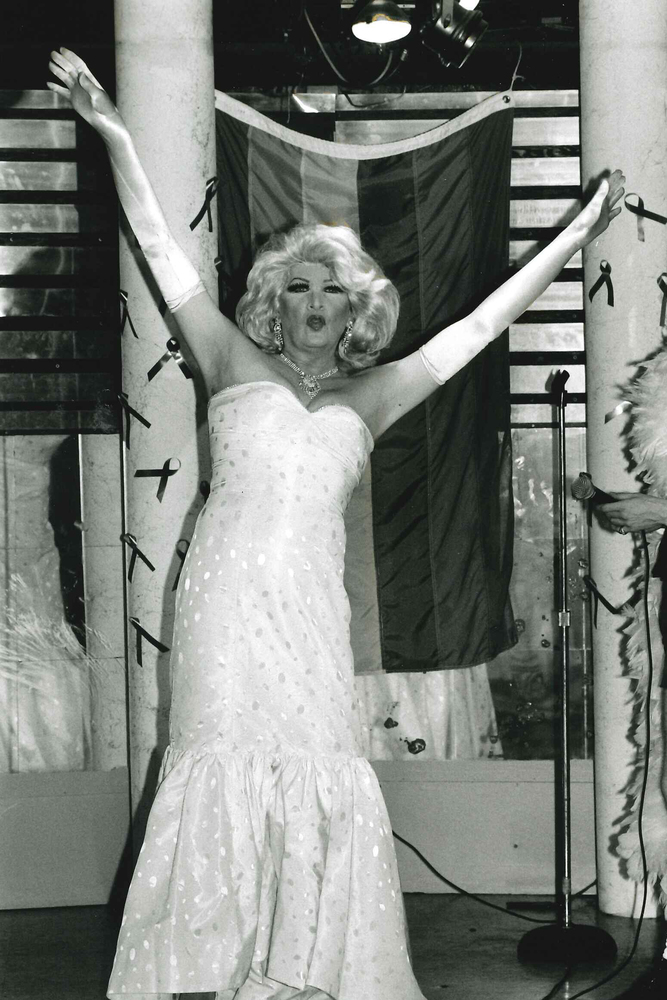Village Legacy Project preserves history of Ottawa LGBTTQ+ community
By Amey Humphries
The Village Legacy Project exhibition may be over, but the impact lives on.
The exhibit was launched on Aug. 22 at Wallack Galleries on Bank Street and ended on Aug. 27. It was designed to preserve “the history of Ottawa’s LGBT community,” and coincided with the launch of a website and an app, which are still live.
The Bank Street Business Improvement Area, namely executive director Christine Leadman, created the concept of the VLP. And Glenn Crawford, who has a background in journalism among other things, was the researcher who made the vision a reality.
But it was much more than just an exhibit. It also covers the history of Ottawa’s LGBTTQ+ community through a walking tour, complete with murals as well as videos that can be accessed through the website and app.
The tour includes a stop at Bruce House, the residential support facility founded in 1988 – at the height of the HIV-AIDS crisis in Ottawa – which sought to find housing, funding and hospice care for gay men and others in the final stages of the disease.
There is also a video of the Lord Elgin Hotel, which, according to the website, has a noteworthy queer history — particularly in the former tavern “Pick’s Place” — that stretches almost as far back as the hotel’s opening in 1941. It also became a place for members of the Gays of Ottawa organization (GO) to unwind after meetings.
GO, as detailed at the website, was an important advocacy group that started at 207 Somerset St. W. in 1971, when Maurice Belanger and Michael Black invited five friends back to their place to discuss forming a gay rights organization.
The website also has a list of gay bars and a tour of places relevant to the history of the GO organization.
The VLP was successful, according to Wallack Galleries owner Michael Wallack, with as many as 60 people seeking it out daily, as well those who would pass through while visiting the gallery.
“It really hit home to a lot of people,” he said.
Many of the people featured throughout the Village Legacy Project – activists who helped shape the history of Ottawa’s LGBTTQ+ community – came into the gallery, Wallack said. People expressed how touched they were, to Wallack directly or through messages on social media.
“The first-ever married lesbian couple in Ottawa came in with their daughter,” he said. “And they were telling me how important it was their daughter had seen it.”
On top of that, the Facebook group The Village Legacy Project|Le projet de legs du Village, boasts more than 1,400 members. Members of the group post about the VLP, but also about other relevant information to the LGBTTQ+ community.
Crawford is particularly active in the group.
Wallack credits Crawford with the VLP’s success.
“He did a great job carrying the show,” he said.
As well as being the chief researcher, Crawford was the reason the walking tour became what it is.
“I proposed a concept of a walking tour that would feature photos and video documentaries on particular topics regarding the people, places, events and topics of importance to building Ottawa’s LGBT community. The proposal also included several public art features along the way, as well,” Crawford said in an email.
He expressed an interest in expanding the project.
“I hope to add more documentaries to the tour for sure, and there will be three more added soon, with hopefully others in the future,” he said.
“As to next stages to the project, I will need to speak with Christine to see what she envisions for (the VLP) in the future… Ultimately, it’s the BIA’s project, and I am merely the researcher,” he continued.
“I believe there is interest and opportunity to continue to grow the project and to expand content and create new initiatives within it.”

